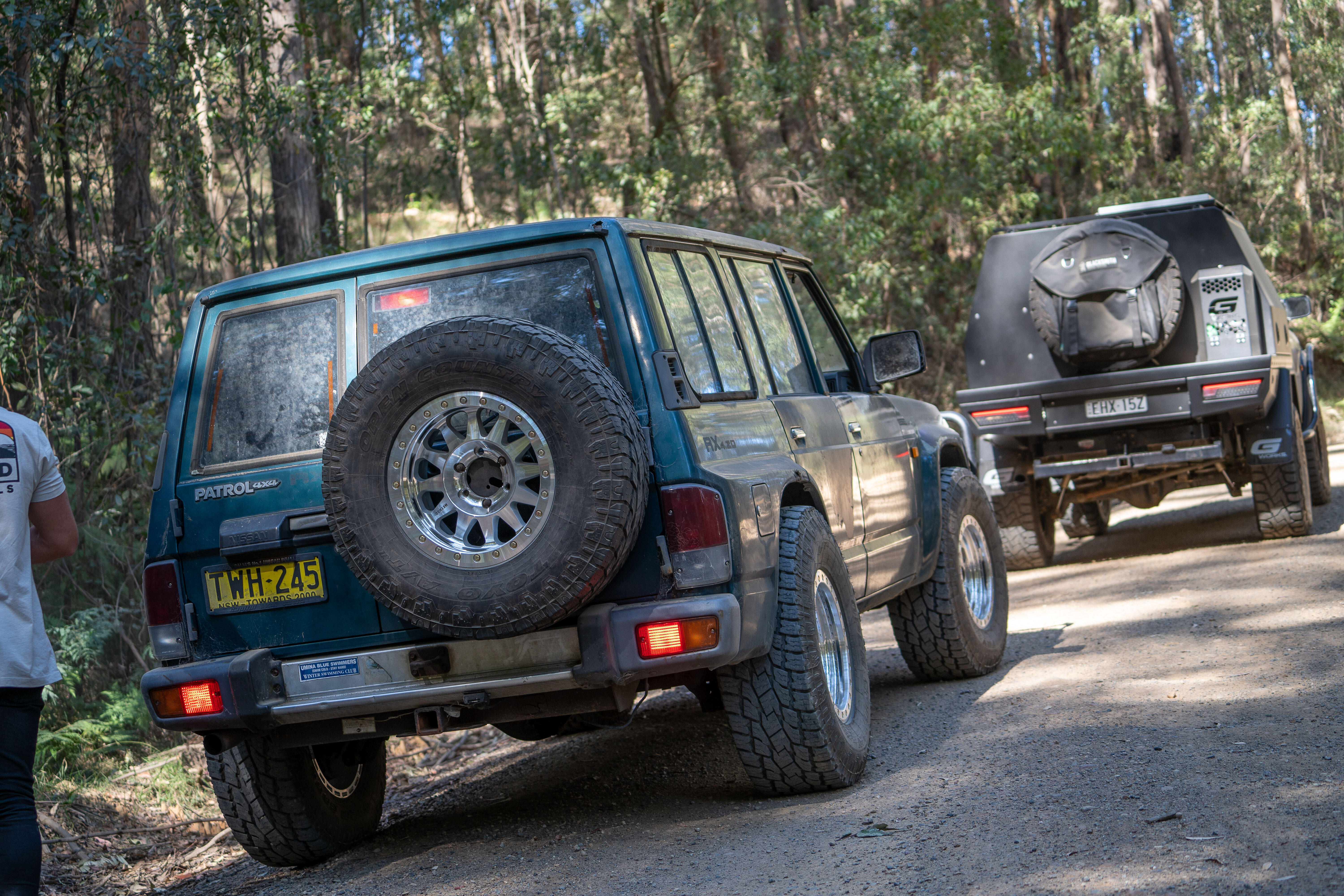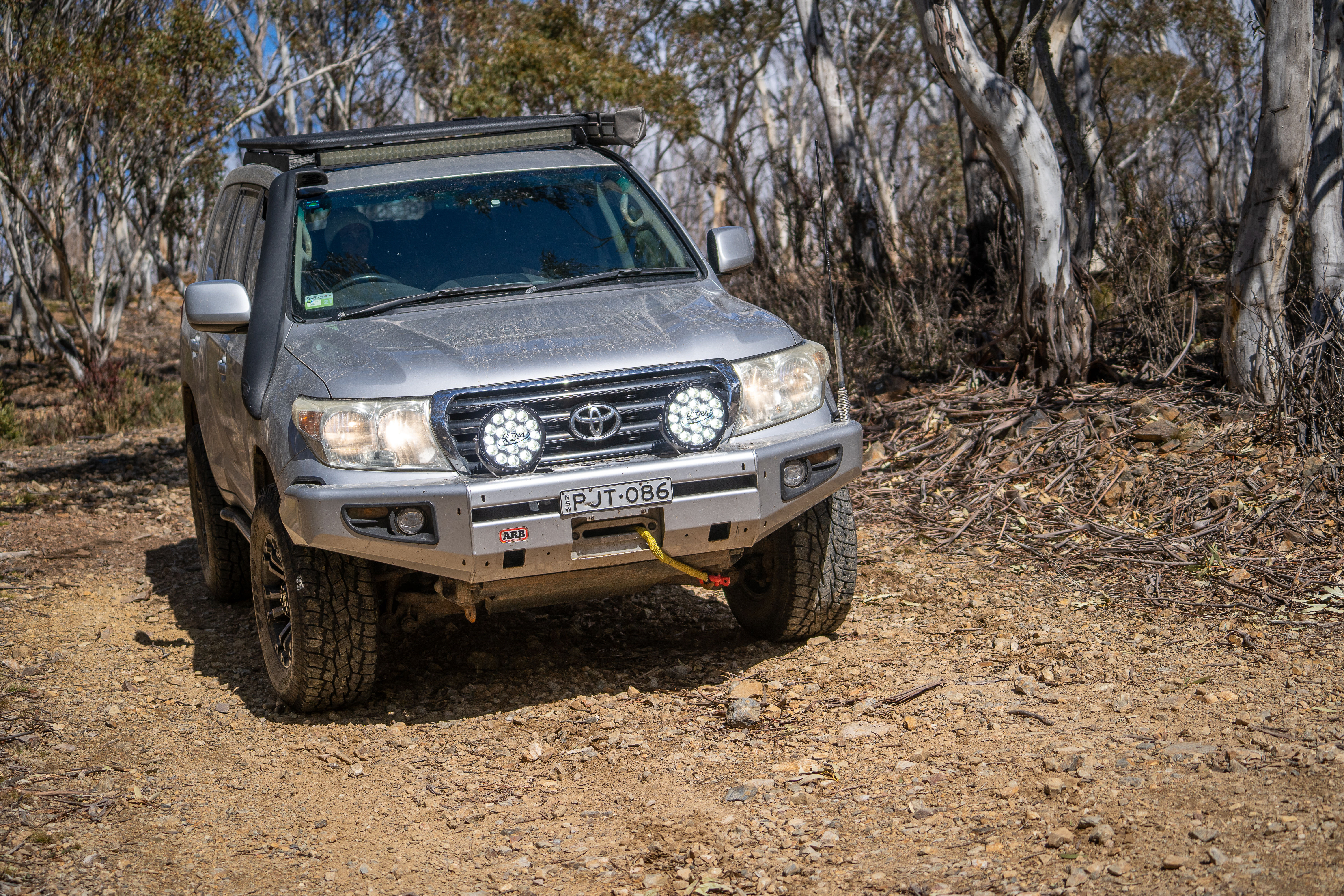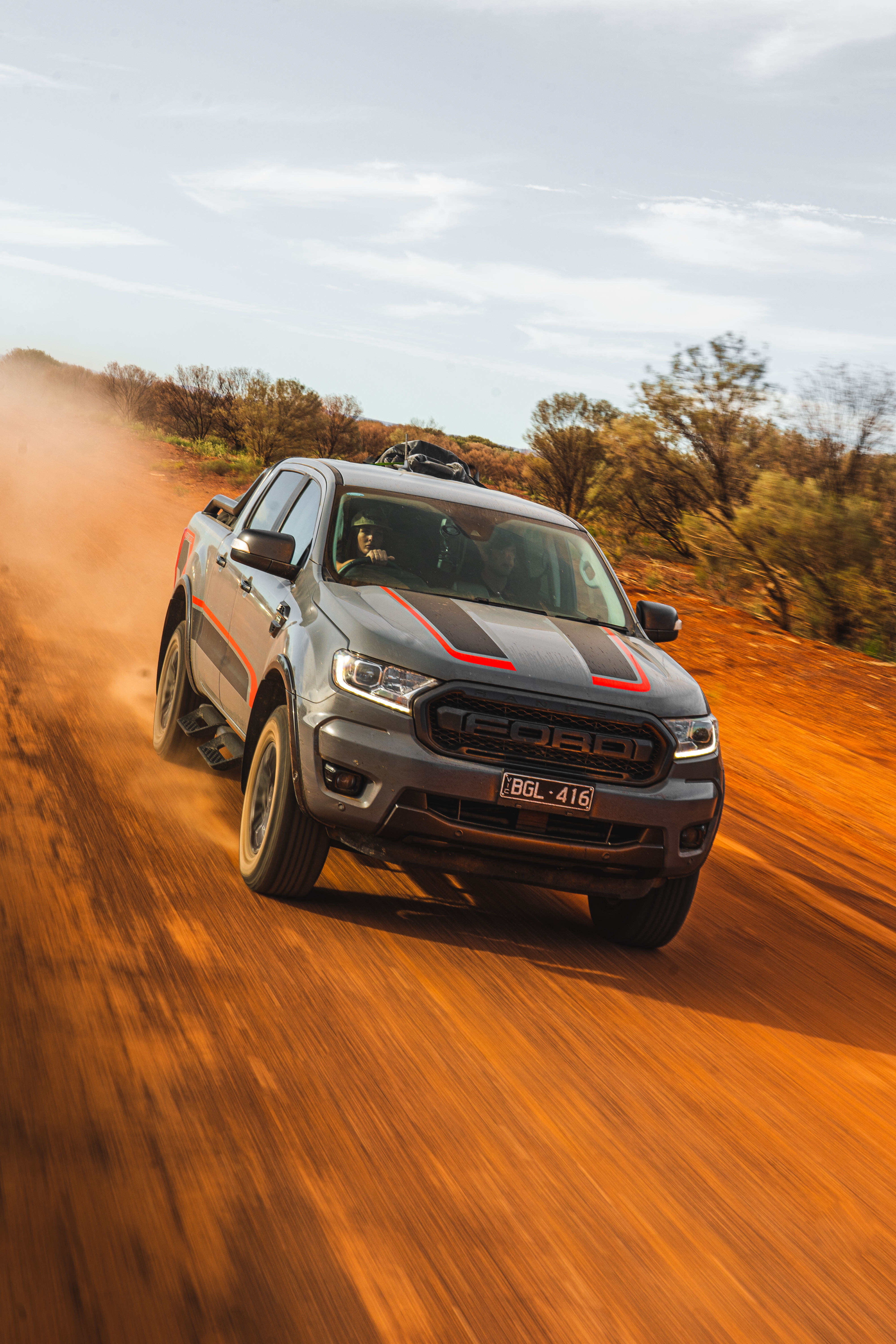Advertisement
Advertisement
The fuel of choice for trucking and heavy industry for decades, diesel reached peak popularity after the introduction of common rail technology. What common rail diesel (CRD) did for diesel can be likened to what steroids do for bodybuilders. It meant that you could get performance out of a low-capacity diesel that was comparable to similar displacement petrol engines. The key, however, was that you could achieve that performance using less fuel.
At this time, diesel had a pretty average reputation with the average punter. It was a dirty, smelly fuel, and diesel powered cars were extremely slow. If you could get your hands on a turbo diesel, some produced respectable power. Most didn’t. You basically had to find yourself any iteration of a 1HD engine in a Landcruiser, or wind up the fuel and boost on a TD42.
You’ve got to remember, we’re talking around 25 years ago here. In 1997 you could still buy a GQ Patrol with an RB30. This is an engine with performance roots in the Skyline and VL Commodore dating back to 1986. Not exactly new technology, nor the engine of choice in a Patrol, but it still delivered 100kW and 224Nm compared to the ‘legendary’ TD42 producing 85kW and 264Nm. This is 1997, so the wheezy old RB30 is 11 years old by now. You can see how diesel was not highly fancied at the time. In 1997 petrol was 72c and diesel was 75c, a marginal difference.
Nowadays, diesel performance is streaks ahead of where it was, but petrol engines have come on in leaps and bounds too. A diesel 300 series Landcruiser is a 3.3L V6 producing 227kW and 700Nm, and the incoming 3.5L petrol V6 makes 305kW and 650Nm. Toyota claim the diesel will achieve 8.9L/100, and we can safely assume the petrol will be higher. Consider that diesel is currently $2.29/L and petrol $1.79/L, and then that the petrol version will be significantly cheaper. Diesel is dying a slow and painful death.

Common rail diesel enjoyed a slow start to life but began to find its way into production vehicles in the mid 1990s. Power outputs were low, and the tolerances so fine that even a micrometre error in manufacture was catastrophic to a fuel system. They were terrible, but Bosch persisted.
The first mainstream 4×4 to run a CRD engine in Australia was the Ford Ranger in 2006. This is the car that really set Ford on its current trajectory in this country, but that’s a story for another time. The engine was a 3.0L double overhead cam unit running Bosch injection. It was a super-torquey engine with a smoothness not seen before in a diesel, but it was thirsty.
From that starting point, all the major brands jumped into CRD technology. The ongoing development meant that each new engine was more powerful and efficient than the last, and it ran quieter. Many manufacturers dropped petrol options completely, so popular were the diesels.
Inadvertently, this rapid development of the diesel engine led to a huge rise in popularity of caravanning. Previously it was purely the domain of the retired grey nomad. They had all the time in the world to get from A to B, so the speed at which they did it was irrelevant. The torque and fuel efficiency of CRD engines meant that you could tow a heavy caravan at regular highway speed, and not blow the budget doing it.

Ironically, the reason we have seen diesel engines advance so far is the very reason for their demise. The Clean Air Act of 1970 was amended in 1990 to be much harsher on the automotive industry. The result is the European Emission Standards, the latest of which is known as Euro 6.
These standards require all petrol and diesel engines to comply with strict emission restrictions on nitrogen oxides, total hydrocarbon, non-methane hydrocarbons, carbon monoxide and particulate matter. Basically it sets a limit on how much of each of the nasties an engine can produce during their standard testing cycle. To further complicate the issue for manufacturers, passenger vehicles and light commercials are treated differently.
To achieve these limits, diesel makers needed to innovate. CRD got the diesel making more power for less fuel, meaning smaller displacement was possible. Using less fuel meant creating less exhaust gas. Then we saw exhaust gas recirculation, diesel particulate filters and Adblue. All huge backwards steps in engine performance, but offering lower nasty emissions. From the viewpoint of a 4×4 enthusiast, it has been a race to the bottom.
Euro 1 began in 1992, and advanced through the stages towards cleaner exhaust emission roughly every 3-4 years. We’ve got Euro 7 on the horizon which has effectively been the death of the 1VD. Not the first iconic diesel killed by emission controls, and definitely not the last.
So strict are these controls, that Nissan didn’t bother putting a diesel in the Y62. They have a 5.0L Cummins V8 diesel in the Nissan Titan in the US. This would have been an easy option for the big Patrol, and it would have sold like hotcakes. Nissan purely decided it was more trouble than it was worth and offered only the VK56 petrol V8. How would the Y62 have fared against the 200 series with a 230kW V8 diesel making 752Nm of torque?
Stellantis, the world’s fifth largest automaker behind Toyota, Volkswagen, Hyundai and General Motors are making decisive moves. They’ve ditched diesel completely for Jeep and RAM, and their diesel engines are exceptional. These guys, and many others see the future as electric. This can be evidenced by the hybrid system they have introduced on the DT RAM 1500, and the new plug in EV Jeep Wrangler.

The future is undoubtedly electric. How we achieve that is anyone’s guess at this point, as each manufacturer is making different moves. Toyota are hell bent on getting you into a hybrid. They’ve been pushing it for over 20 years, and honestly, they’re a good thing. Just how well this tech translates into bigger 4x4s remains to be seen, but they are committed to this direction. They’ve managed to squeeze in one more diesel before the Euro Emission Standards kill that idea.
Jeep have a new inline six cylinder petrol engine on the way, along with their plug in EV option. In the 3.0L CRD V6, Jeep had a brilliant diesel option. Offering 179kW and 569Nm it performed almost identically to the 5.7L Hemi V8. It was super quiet and very fuel efficient, but still wasn’t good enough to comply with the ever tightening Euro requirements.
RAM are sending the V8 out with a bang. They’ve stuffed their biggest, angriest Hemi into the 1500 and screwed a supercharger on top. They’re going after the F150 Raptor, and they’ve aimed up with both barrels. It produces 523kW and 882Nm making it the world’s most powerful pick up truck. In the less bonkers models RAM have hybrid Hemis for now, but the big V8s days are numbered.
Nissan have already shown their hand by going petrol only for the Y62. They’ve made it clear they aren’t interested in trying to make a diesel work for the Patrol, but what is the future for the Navara? They have made a bit of a name for themselves in recent years of being a car maker that responds to the market rather than innovates. They might surprise us, but in all likelihood they’ll wait to see what works for others and follow suit.
Volkswagen are walking on eggshells around the emissions standards folk. They’ve been found to have been selling vehicles across the planet that don’t meet the emissions requirements. The end result being criminal charges for six senior executives, and recalling up to 13 million cars at a cost of 6.7 Billion Euros. That’s billion with a B. On top of that, there are a series of enormous fines in affected countries, including the EPA in the US having the power to fine VW $37,500 for each vehicle that breaches. That’s a maximum fine of around $18bn.
What we can learn from that is that a) the Euro emissions stuff isn’t going away, it’s here to stay, and b) Volkswagen aren’t going to muck it up again. They can’t, it’ll kill them. This scandal almost did, but another emissions failure would be the death of them. They’re a smart company, though, so we’re excited to see where they take the Amarok after the diesel.
The Ranger wasn’t first in 2006, the Discovery had CRD (earlier form of it in 1999) in the D2 and the D3 in 2004/5
Is it true that diesel fuel is a byproduct of unleaded petrol? If so, that would mean the diesel drivers are subsidising petrol motorists. Very onesided discrimination and surely a breach of the Trade Practices Act..
Not true, both are produced. See https://mammothmemory.net/chemistry/fractional-distillation/remembering-the-order-of-the-fractions-of-crude-oil/remembering-the-order-of-the-fractions-of-crude-oil.html
What is interesting is the crossover between jet fuel and diesel, in a sense you have to choose how much you get of each. Increased demand for jet fuel does affect diesel prices.
Had to tow 2 nissans and a ram out of the water last wet season. Petrol won’t run under water. That makes them dangerous up here.
Emissions control people don’t drive around in the wet…
Diesel won’t run under water either pal! Water destroys diesels….catastrophic damage. Petrols, just change the air filter & dry the plugs & good to go again. I’ve driven my petrol hilux through windscreen deep water without a problem while the diesel following behind me got a gut full of water, destroyed the engine & had to be towed out! As long as you have a snorkel &/or don’t exceed your vehicles water fording depth water is no problem for petrol engines at all! Diesels & water is a recipe for catastrophic engine destruction!
Electric sounds like the answer then…
Do water and electricity mix well….???
perhaps best to use common sense and not drive through ridiculously deep water steve . 😉
you’re living in the 70’s mate. Petrol’s problem with water was historically the mechanical ignition system, which went the way of the dinosaur decades ago. Yeah there’s still plenty of electronics but that applies as much to modern diesels as it does to petrol. Put the ECU or air intake underwater and either way it’s gonna stop.
Errr, the Jeep’s current diesel V6 is in fact 184kw and 580 nm torque…since 2014 in Australia…
The future isn’t electric in Australia. This article is just propaganda and rubbish. When you’re holding Nissan and vw up as the leaders, you know you’re in trouble!
Go and buy a replacement electric vehicle battery and see how they stack up then, added to the 50% increase in electricity prices being forecast, the future will be horse and cart.
Too much methane would be generated, unless on a seaweed diet. We are going to have to kill all of our livestock too, if the greenies have their way.
Thats all very well but once you get outback supply of petrol is pretty limited
I reckon we have a long way to go before we start towing off-road campers or caravans behind an electric vehicle. They may be fine around coastal & built up areas but I think you would need to take a decent sized generator if you wanted to go to the places you bought your diesel or petrol 4X4 for.
STREETS ahead Todd
Should have left the ram – yankee crap
I hear what you’re saying about the electric technology however I wish to put forward the hydrogen cell alternative. The Federal government has backed a hydrogen plant in Queensland and WA have also backed one in the northwest. Toyota have just released a hydrogen cell car, the first manufacturer to do so. Remember this technology has been around since 1964 when an inventor in Victoria converted a Ford Falcon to run on water.
Sadly and unfortunately the all powerful Shell Oil bought the rights for a lousy $60k and put it on the shelf. Shell could well be accused of environmental vandalism for hiding this technology and polluting the planet ever since with fossil fuel motors all in the name of money. Apparently big corporations put money before the welfare of our planet Earth.
Petrol engines do not have the same capabilities in a real 4WD scenario especially water crossings. They also do not have the same torque range as a diesel. It’s like comparing apples and lychees.
Petrol engines do not have the same capabilities in a real 4WD scenario especially water crossings. They also do not have the same low torque as a diesel and V9’s perform way better than a V6 for power. Unless of course you are using 20 gears and a highly pressurised fuel rail and twin turbos (that will always blow the 2nd one up).. It’s like comparing apples and lychees.
The other most disappointing thing that has been done recently by Toyota is the removal of a manual gearbox in the new series Prado’s. I love the Prado, I am on my 3rd one and I love it but without a manual gearbox, I will never buy another one.
The insane cost of replacing Fine Particle Filters in Mitsubishi is why I’m walking away from them in the future. Neste BIOFUEL should help the situation and we ditch the filters altogether then.
So how do the idiots think they’re going to replace all the diesel machinery and other equipment that runs on diesel? The whole conspiracy is bullshit! The fuel companies have the technology to produce clean bio diesel from plant based products, (sunflower, corn oil, linseed, canola & all types of other cooking oils! Afterall they make petrol from sugar cane!!!
Not petrol, methanol or ethanol. Alcohols, completely different to petrol. There are some problems using 100% methanol as a fuel, as it absorbs moisture from air.
No mention of the current class action taking place against Toyota for fiddling the emissions on their diesels.